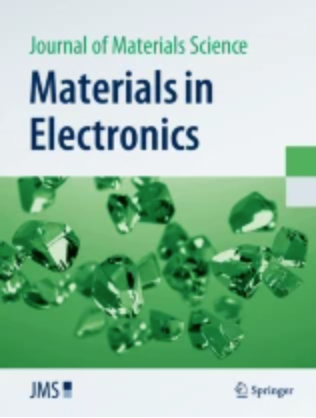Fabrication of PS/Si3N4/SrTiO3 multifunctional nanocomposites and boosting their microstructure and optical and dielectric features for energy storage and nanodielectric applications
Abstract
The aim of this study was to fabricate Si3N4–SrTiO3 nanomaterial-doped polystyrene (PS) to utilize in futuristic photonics and nanoelectronics applications. The structural, electrical, and optical features of PS/Si3N4/SrTiO3 films were investigated. The results indicated a percentage increment of the absorption above that of PS of 90% at λ = 300 nm and 95.8% at λ = 800 nm when increasing the Si3N4/SrTiO3 concentration to 6.6 wt.%. The bandgap of PS decreased from 4.22 to 2.4 eV for the allowed transition but reduced from 4.1 to 1.5 eV for the forbidden transition when increasing the Si3N4/SrTiO3 nanoparticle (NP) ratio to 6.6 wt.%, a behavior that makes such materials favorable for use in many optoelectronics approaches. The optical features of the PS were improved when increasing the Si3N4/SrTiO3 NP concentration, making such PS/Si3N4/SrTiO3 films potential materials for use in optical fields. The dielectric properties show that the dielectric constant of PS at 100 Hz was improved from 3.34 to 4 while the alternating-current (AC) conductivity increased from 7.61 × 10–12 to 1.78 × 10–11 S/cm when the Si3N4/SrTiO3 NP content reached 6.6 wt.%. Finally, the results confirm that such PS/Si3N4/SrTiO3 films could be considered as promising materials for use in nanoelectronics and optical applications.

 求助内容:
求助内容: 应助结果提醒方式:
应助结果提醒方式:


